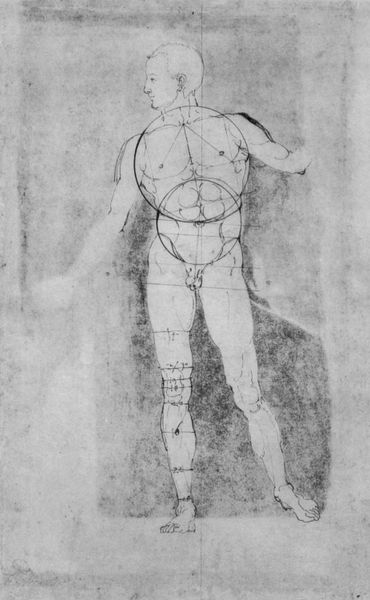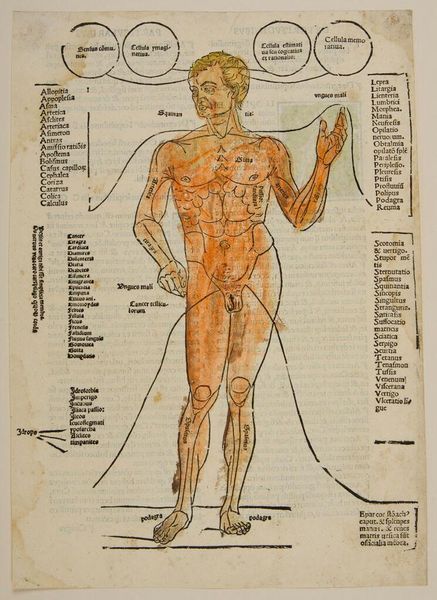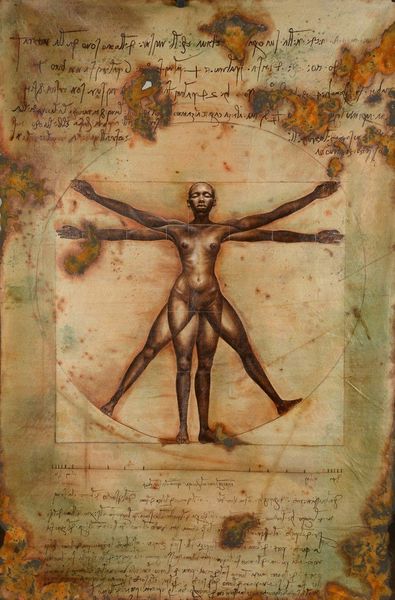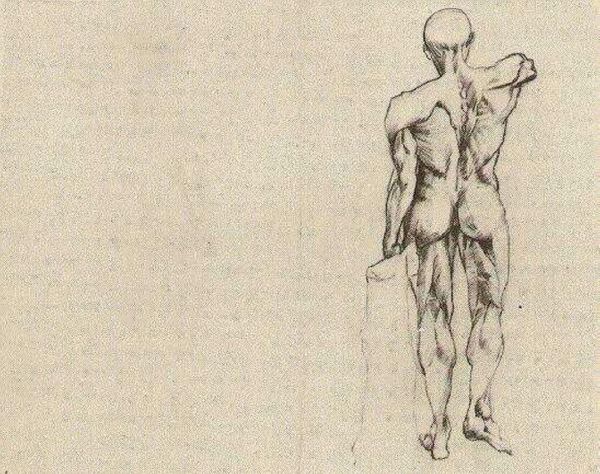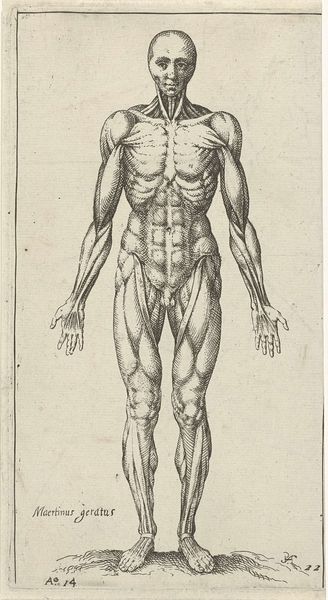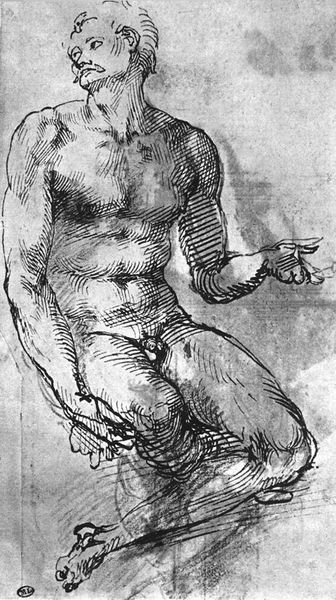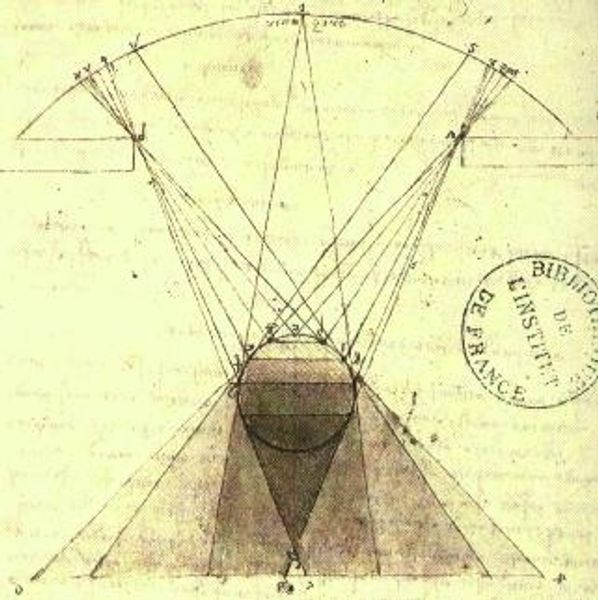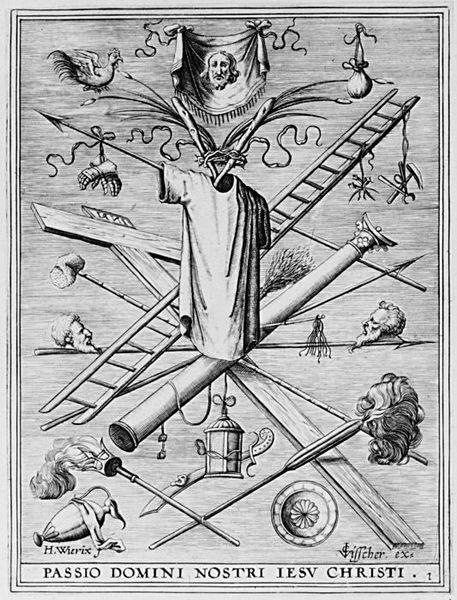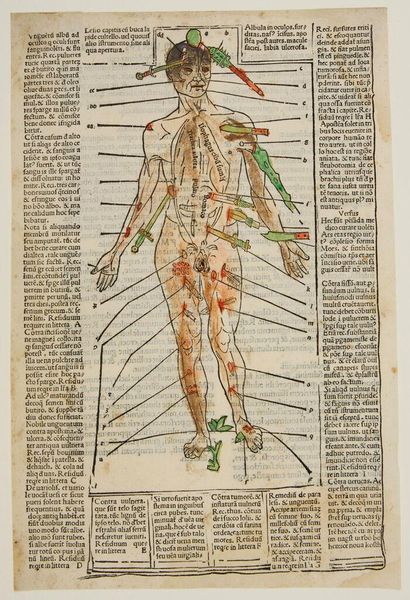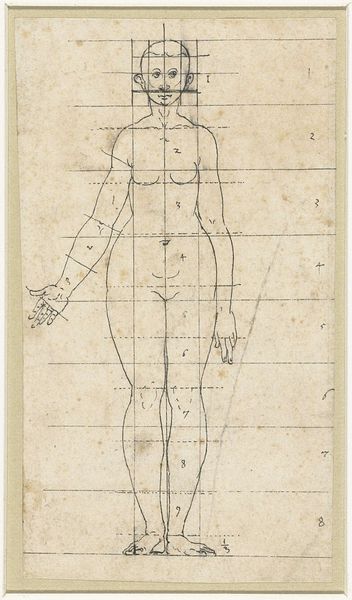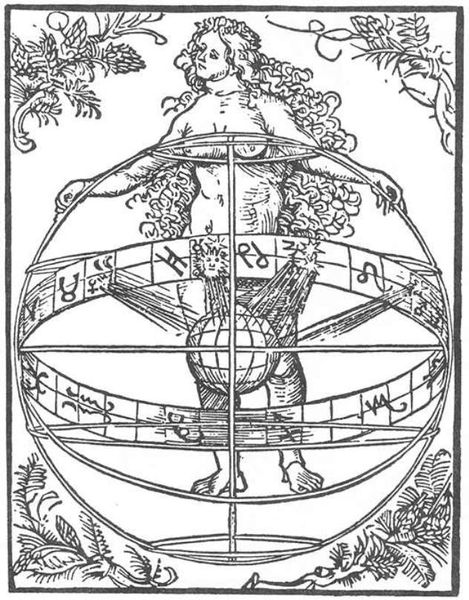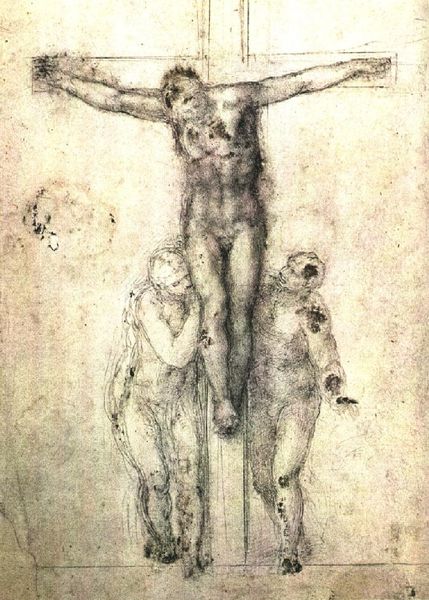
The proportions of the human figure (The Vitruvian Man) 1492
0:00
0:00
leonardodavinci
Galleria dell'Accademia, Venice, Italy
drawing, paper, ink
#
portrait
#
drawing
#
figuration
#
paper
#
11_renaissance
#
ink
#
geometric
#
human
#
line
#
academic-art
#
italian-renaissance
Dimensions: 24.5 x 34.3 cm
Copyright: Public domain
This pen and ink drawing by Leonardo da Vinci presents the ideal human form inscribed within a circle and a square, symbols of divine perfection and earthly order. This figure, often called the Vitruvian Man, echoes ancient traditions where the human body was seen as a microcosm, reflecting the larger universe. Note how the outstretched arms and legs touch the boundaries of the geometric shapes, embodying harmony and proportion. We see similar ideas in earlier Egyptian art, where the human form was also rendered according to strict geometric principles, as well as medieval diagrams connecting the body to the cosmos. This motif transcends time, shifting from religious to scientific contexts, yet always retaining a sense of profound connection between humanity and the universe. It engages our subconscious on a primal level, evoking a sense of belonging and understanding our place within a larger cosmic order. This symbol has resurfaced, evolved, and taken on new meanings throughout history, continuously reminding us of the unbroken chain of human knowledge and our deep-seated need to find order in the cosmos.
Comments
No comments
Be the first to comment and join the conversation on the ultimate creative platform.
